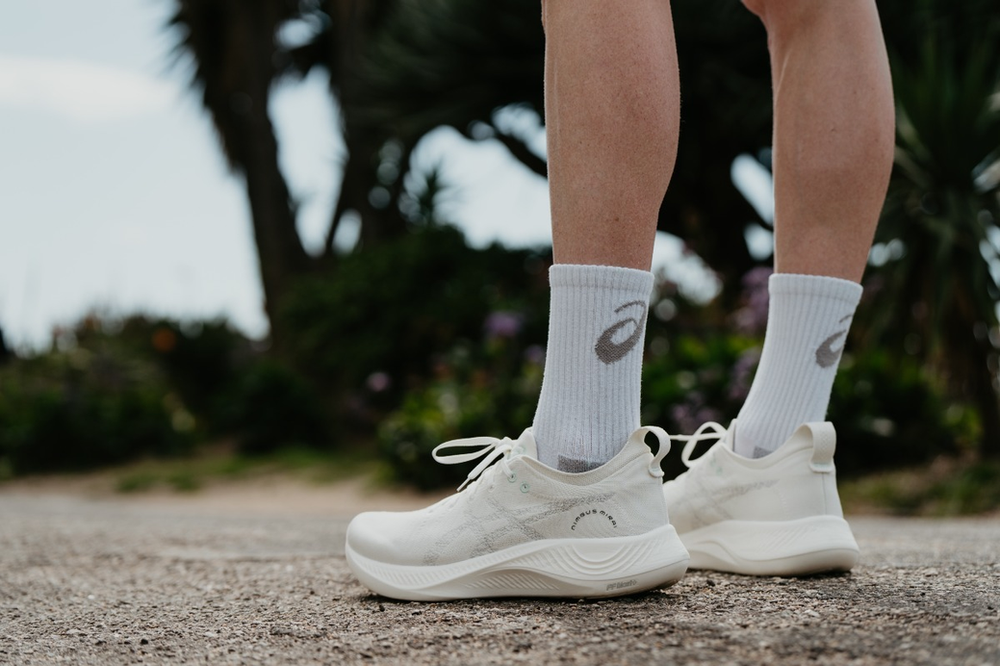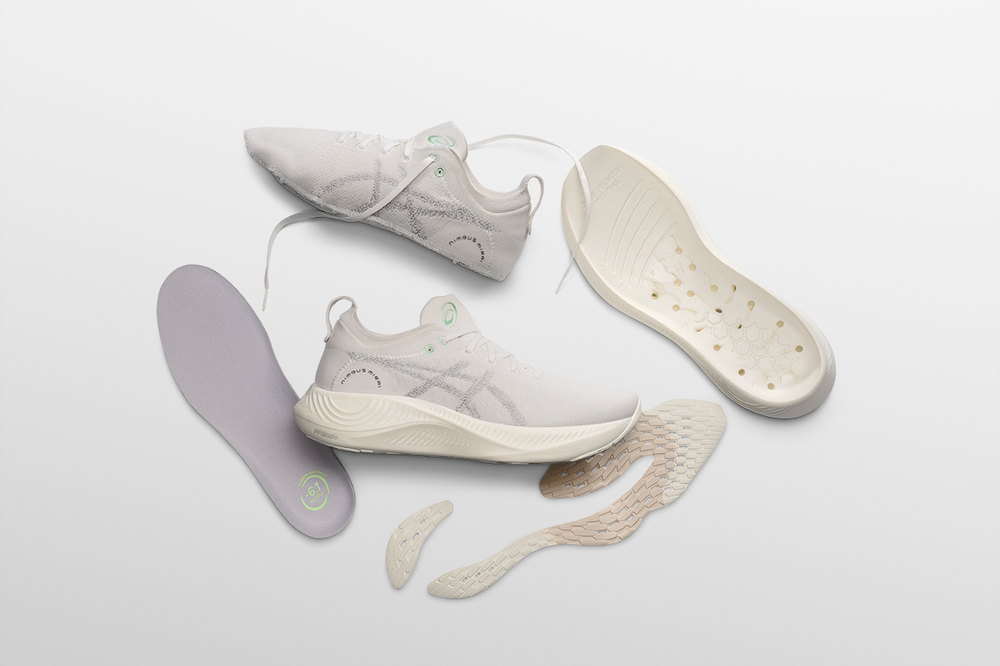
Monday, April 22 is Earth Day, that annual day we like to celebrate all things green and sustainable as runners, even though the shoes on our feet are typically a very noxious problem. How so? The manufacturing of running shoes is a dirty business that uses virgin materials and ships products all over the world. Furthermore, every running shoe I’ve ever run in is still likely on the planet, in relatively good condition, given that it takes several hundred years for a shoe to break down and biodegrade. Considering I have been wear-testing running shoes for the past 25 years, it means there are a lot of my old shoes that haven’t started rotting away yet. Ugh, that’s a rough thing to think about.
Here are three ways to take a more sustainable approach to running shoes:
It might take anywhere from 50 to 1,000 years for a pair of running shoes to break down and begin to biodegrade. On average it takes natural materials 25-80 years to break down, but the synthetic materials of a shoe made from plastics and petroleum take much longer, going up to 1,000 years to decompose. That should be all the reason you need to donate your shoes to an organization that will find someone who can continue using them before they are discarded, or better yet, use those shoes to implement bigger changes.
“We can wind up taking running shoes for granted, because it’s so easy for us to buy and use running shoes, and when we’re done we just get rid of them. But they can be so valuable to someone else,” says Mike Sandrock, founder of One World Running, which collects and distributes used running shoes to runners in need in the U.S., Honduras, Haiti and Cuba. “In many parts of the world, used shoes are so valuable and so cherished.”
Here are a couple of other organizations doing good work on this issue:
Shoe4Africa’s initial focus was on collecting and distributing athletic shoes to aspiring young runners in Kenya. Over the years, Shoe4Africa expanded its scope to address broader issues affecting children, including healthcare and education.
Soles4Souls gives people in need shoes so they can go to school, work and stay healthy. They also organize work trips for individuals and groups to give out the shoes.
Share Your Soles provides gently worn running shoes to people in underdeveloped countries so they can safely walk to work, school or wherever they may need to go.

The running shoe industry has a long way to go to make its manufacturing processes more sustainable, but progress has been made. ASICS recently launched the Nimbus Mirai, a cushy everyday trainer made from green materials that are completely recyclable. It looks, feels and runs like the standard Gel-Nimbus 26, but it’s much better for the environment. Built with a one-piece recycled polyester mesh upper, a cushy and responsive FF Blast Plus Eco midsole foam, and a one-piece segment of recyclable outsole rubber, the shoe looks and runs similarly to the brand’s traditionally-built GEL-Nimbus 26 that hit running stores in February of this year.
Salomon launched its Index.01 recyclable shoe in 2021, while On unveiled its Cyclon subscription program and its fully recyclable Cloudneo shoe in 2022. Nike rolled out its sustainably-oriented Air Zoom Alphafly Next Nature in 2021 and then last year debuted its ISPA Link Axis sneaker made from fully recyclable interlocking components. In 2022, Adidas and Allbirds collaborated to make the Adizero x Allbirds running shoe with a 2.94 kg CO2e score. There’s also the Saucony Triumph RFG, a neutral-oriented everyday trainer with an innovative bio-based midsole, a cotton upper colored with plant-based dyes and an outsole engineered from 80 percent natural rubber. Lastly, a new brand called Hylo Athletics has just released its Impact training shoe with a corn-derived lining and a supercritical nitrogen-injected foam with added bio-EVA to increase responsiveness and a 8.63kg/CO2e score.
Doing the little things matters. Running errands around town instead of driving, installing energy-efficient light bulbs, choosing reusable shopping bags, conserving water, and, in general, reducing, reusing, and recycling whenever possible. For trail runner, artist, and filmmaker Max Romey it’s about taking small creative steps that include messaging, changing manufacturing norms, and developing products that can be repaired, recycled, and reused. In the short film, “No Lost Shoes,” Romey highlights, collects, and illustrates hundreds of shoes he finds washed ashore at Katmai National Park and Preserve. In doing so, he tells a story about how the footwear industry has inadvertently become one of the biggest ocean polluters in the world because people discard old shoes.
“I used to think that these massive issues that are coming down the pipeline would be something that would take an enormous solution, but the more that I learn and the more that I see, I’m realizing that these huge issues are going take a lot of little solutions to add up, to fix them,” he says. ”It’s a little bit more heartening when you can actually see those solutions happening. It’s gonna take just a ton of people and a lot of creativity to find what those solutions are. It’s great to share why it’s so important that shoes are more than something that’s just disposable.”